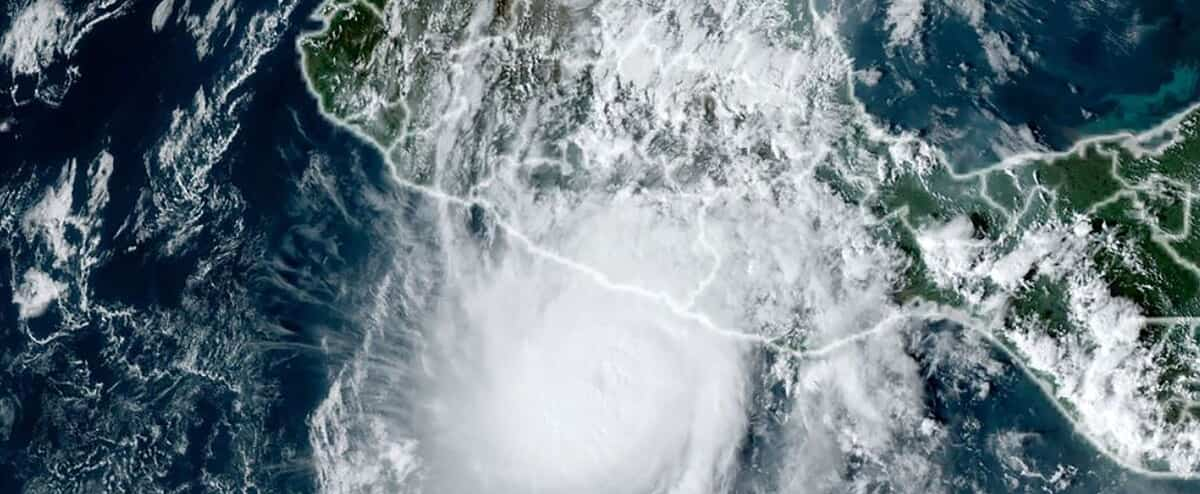Maximum strength 5 Hurricane Otis, which killed 27 people in Acapulco by devastating the famous seaside resort in southwestern Mexico, surprised by the speed with which it strengthened at sea before making landfall, an “extraordinary” phenomenon said Michel Brennan from the National Hurricane Center (NHC) based in the United States.
• Also read: Acapulco devastated by Hurricane Otis: “It’s total chaos. It’s indescribable”
• Also read: Hurricane in Acapulco: Establishment of an airlift to evacuate tourists
• Also read: PICTURES | At least 27 dead in Acapulco after Hurricane Otis
“The way Otis has excelled is extraordinary. “The hurricane has broken records in some respects,” explains the director of this American center based in Miami, which is responsible for weather forecasts and warnings for the Atlantic and Pacific.

AFP
From a simple tropical storm, Otis transformed into a hurricane with a maximum strength of 5 on the Saffir-Simpson scale in just a few hours on Tuesday afternoon off the Pacific coast of Mexico. It reached land with wind speeds of 270 km/h.
According to the World Meteorological Organization, Otis is “one of the fastest-strengthening hurricanes of all time,” surpassed in this regard only by Patricia in 2015.
“Unfortunately, Otis was able to benefit from very favorable conditions, such as the warmth of deep water in the Pacific Ocean off the west coast of Mexico and a favorable atmospheric environment,” Brennan said.

AFP
“The hurricane was able to develop an inner core and structure that allowed it to take advantage of these favorable conditions and the ocean environment and intensify quickly,” he adds.
Hurricanes hit the coast of Mexico several times a year from May to October to November. Then again, few of them hit the ground with that much force.
“There are no recorded hurricanes approaching this intensity in this part of Mexico,” the NHC noted in one of its bulletins, warning of a “nightmare scenario” as the hurricane approaches.

AFP
“I don’t think (Otis) changes the way we do forecasting,” the NHC director said. It “posed challenges due to its rapid intensification and was not well planned. There were other hurricanes that we successfully predicted would strengthen quickly. And we have made great progress in the last five to ten years.
According to Brennan, Otis formed off the coast of Mexico in water temperatures of 31 degrees.
“It might be a little warmer than usual, but not by much. “There’s usually pretty warm, deep water in this area this time of year,” he explains.
“It is therefore difficult to attribute this particular aspect to climate change. We need to come back (to Hurricane Otis) and do some studies.”

AFP
“Science doesn’t yet have a clear idea on this topic,” says Brennan, who himself has a doctorate in atmospheric sciences.
“There are some studies that suggest rapid intensification is becoming more common with climate change,” he said.
“We are confident that the impacts of hurricanes in terms of rainfall intensity, flooding and storm volume will become worse with climate change.”
As the sea surface warms, the frequency of the most violent hurricanes increases, but not their number.

AFP
The proportion of particularly intense cyclones (category 4 and 5) is likely to increase by 10% at +1.5°C warming compared to pre-industrial times, by 13% at +2°C and by 30% at +4°C , according to the 2021 IPCC report.
Hurricanes, in particular, pose an increasing threat to coastal communities.
According to the Intergovernmental Panel on Climate Change (IPCC), more than a billion people will live in vulnerable coastal cities by 2050 due to rising sea levels.

